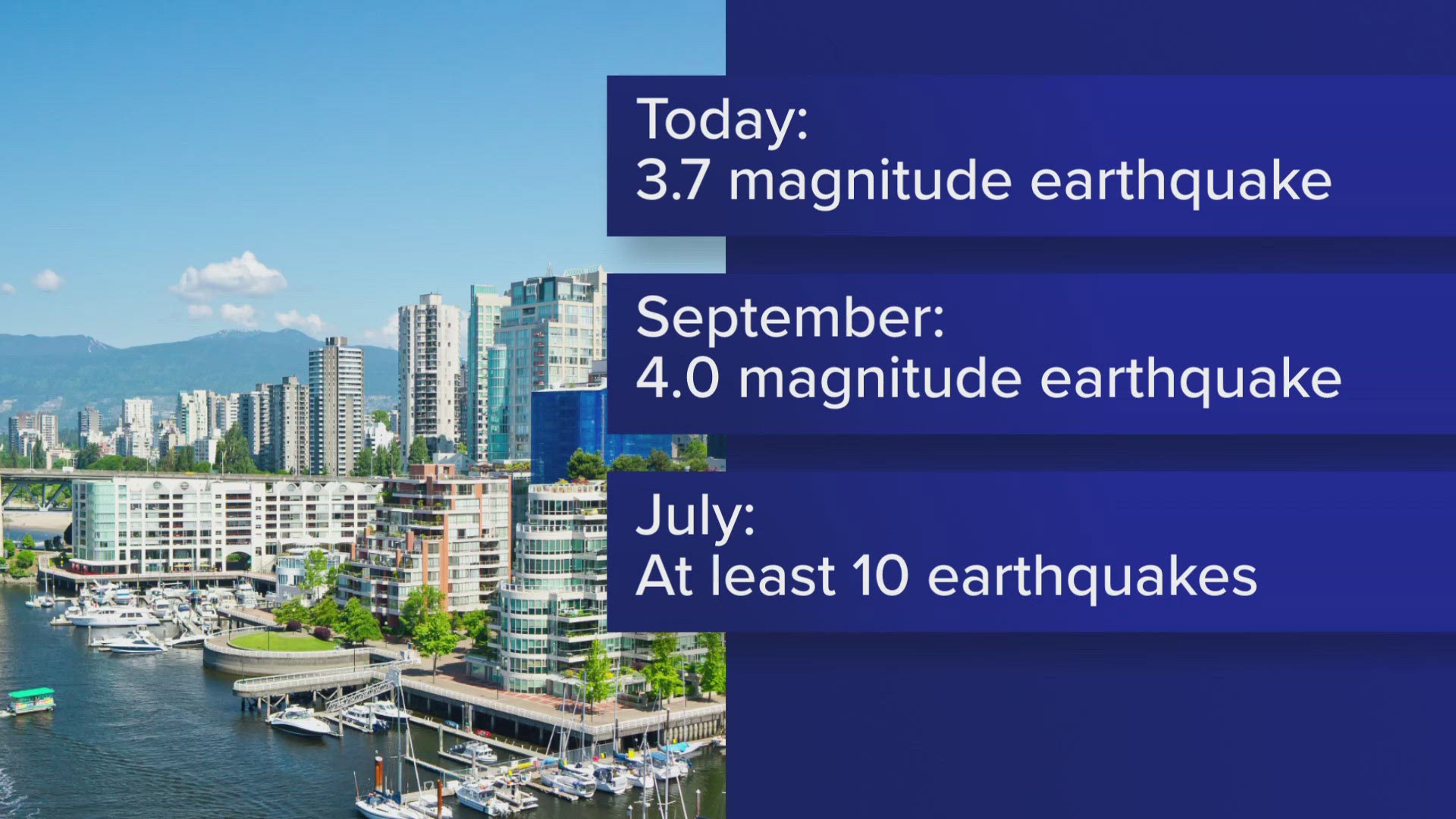
3.7 Magnitude Earthquake Strikes Near Vancouver, Felt Across Regions
Early this morning, a 3.7 magnitude earthquake rattled the waters southwest of Vancouver, British Columbia, and was felt across a wide region, even reaching as far as Bellingham, Washington. The quake occurred just after 2 a.m. in the Strait of Georgia, near the U.S.-Canada border, according to the Puget Sound Seismic Network (PNSN). With a depth of about 37 miles below the Earth’s surface, the tremor had a noticeable reach across parts of British Columbia. Many residents were surprised by the shaking, but no major damage has been reported.
This earthquake follows a pattern of increased seismic activity in the region. Just a couple of weeks ago, in late September, a 4.0 magnitude quake was recorded off the waters of Victoria, B.C. Over the summer, there was also a series of larger quakes off Vancouver Island, including a significant 6.4 magnitude tremor.
Also Read:- Prince George, Princess Charlotte, and Prince Louis Likely Asking About Uncle Harry Amid Royal Rift
- Florida Declares State of Emergency as Tropical Storm Milton Intensifies
Earthquakes are not uncommon in the Pacific Northwest, where geological forces are constantly at play. Washington state is particularly susceptible to earthquakes because of the interaction between the Juan de Fuca Plate and the North American Continental Plate. The Juan de Fuca Plate is slowly sliding beneath the North American continent, in a process called subduction. This area is known as the Cascadia Subduction Zone, a major fault line that has the potential to generate devastating earthquakes. Experts say that Washington state has one of the highest risks in the U.S. for significant seismic events.
In fact, the state experiences earthquakes daily, though many are too small to feel. There are three primary types of earthquakes in the region: shallow fault quakes, deep fault quakes, and subduction zone quakes. Shallow fault quakes usually happen near the Earth’s surface, and their effects are mostly localized. Deep earthquakes, like this morning’s event, occur when one tectonic plate slips under another and can affect a larger area, though they tend to be less intense than shallow quakes. Subduction zone quakes, which are potentially the most dangerous, release massive amounts of energy and can cause widespread destruction.
While the recent quakes haven’t caused significant damage, they are a reminder of the seismic risks that the Pacific Northwest faces. Preparedness is key, and officials urge residents to stay informed about earthquake safety and to have emergency plans in place. Given the region’s complex geological setup, it’s essential to be ready for potential future events, especially with the ongoing seismic activity along the Cascadia Subduction Zone.
Though this morning’s earthquake was relatively mild, it serves as another reminder that the forces beneath the Earth are constantly shifting, and the Pacific Northwest remains one of the most earthquake-prone regions in the United States.
Read More:

0 Comments